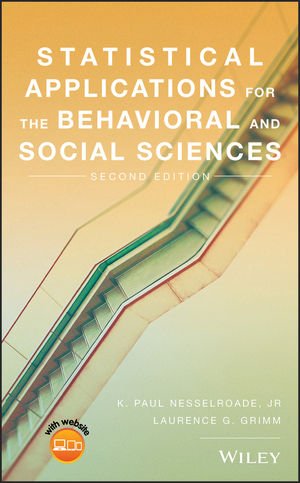(Essay found in Nesselroade & Grimm, 2019; pgs. 39 – 40)
Use the scale below to respond to the following statement: I enjoy studying statistics.

| ○ | ○ | ○ | ○ | ○ |
| 1 | 2 | 3 | 4 | 5 |
| Strongly Disagree | Disagree | Neither Disagree nor Agree | Agree | Strongly Agree |
If we have ever had to respond to a question in this manner, we can thank the social scientist, Rensis Likert. Likert, born in 1903 in Cheyenne, Wyoming, first began his undergraduate studies in 1922 in civil engineering, but then soon discovered that he preferred to study people instead of inanimate objects (Faculty History Project, 2011). Over the next ten years, he studied a variety of disciplines including sociology at the University of Michigan, and theology at Union Theological seminary, culminating with a Ph.D. in psychology from Columbia University. In his dissertation, he presented a measurement tool he developed to assess how people felt about various topics related to international affairs. This scale, which asked the respondent to place their attitude on a 5-point scale of favor-to-disfavor with a neutral midpoint, was a much simpler procedure compared to the currently preferred but cumbersome method developed by another important psychologist named Leon Thurstone (Croasmun & Ostrom, 2011). Since Likert’s scale yielded similar results to Thurstone’s and yet was much easier to use, Likert’s procedure soon became the method of choice for measuring personal attitudes on almost any topic across the behavioral and social sciences. However, there was a price to be paid for the scales’ simplicity; it was unclear if these sequential categories from 1 to 5 were best understood to be characteristic of an ordinal scale or an interval scale? The debate still goes on today and will be discussed more in Box 3.1.
In 1939, now working for the United States Department of Agriculture (USDA), Likert began to use his scale to measure farmers’ reactions and attitudes toward a variety of President Roosevelt’s New Deal programs that were sponsored by the USDA (Kish, 1990). Gaining information about people’s perceptions is extremely important in a democratic system where those who are governing are beholden to the people they govern. Likert realized this, and over time his measurement efforts gathered a lot of interest and attracted many professionals from a variety of other disciplines who were, likewise, interested in assessing the personal attitudes of people regarding all sorts of policies, products, and perspectives. As the United States entered the Second World War, his research and measurement team became involved in the construction of several national surveys designed to measure American’s attitudes toward many war-related government efforts like the selling of war bonds, the instituting of price controls, and rationing.
After World War II, Likert and several colleagues, eager to apply their measurement methods to new problems in a post-war world, started what is now called the Institute for Social Research at the University of Michigan (see home.isr.umich.edu/). Despite the never-ending challenge to secure funds for research support, Likert’s unfailing optimism that evaluation research would become increasing recognized as a needed commodity by academic, commercial, and government organizations was soon shown to be accurate. His institute grew rapidly; in just a few years becoming the largest university-organization of its kind.
In addition to Likert’s measurement insights and administrative and organizational talents, he was also a theorist. For instance, he long held an interest in the study of management styles. While at the Institute for Social Research, Likert proposed a theory of management-style development arguing that it culturally evolved through a series of four stages; from ‘exploitable authoritarianism’ through ‘benevolent authoritarianism’ and ‘consultive management,’ finally arriving at ‘participative management’ (Hall, 1972). He was a very prolific writer and thinker authoring several books and over 100 published articles. Looking over the totality of his life, it is easy to conclude that his influences on the field of attitude measurement as well as his writings on business, industry, and management have been unquestionably significant; and yet perhaps ironically, a bit hard to measure.
Find this and other spotlights on important statisticians in the Nesselroade & Grimm textbook.
Croasman, J. T. & Ostrom, L. (2011). Using Likert-type scales in the social sciences. Journal of Adult Education, 40(1), 19-22.
Faculty History Project. (2011). Retrieved from http://um2017.org/faculty-history/faculty/rensis-likert/memorial
Hall, J. W. (1972). A comparison of Halpin and Croft’s organizational climates and Likert and Likert’s organizational systems. Administrative Science Quarterly, 17(4), 586-590.
Kish, L. (1990). A CHOICES Profile: Rensis Likert: Social scientist and entrepreneur. Choices, 5(4), 36-38.